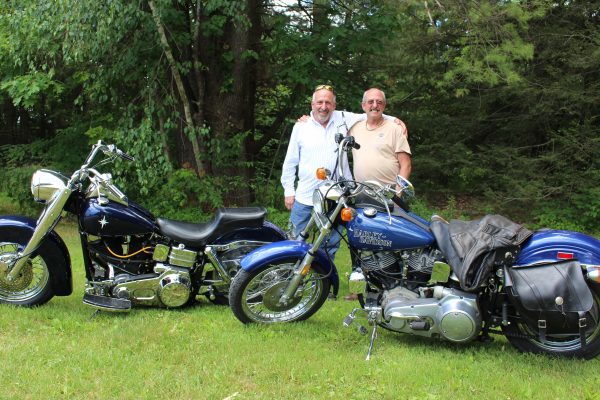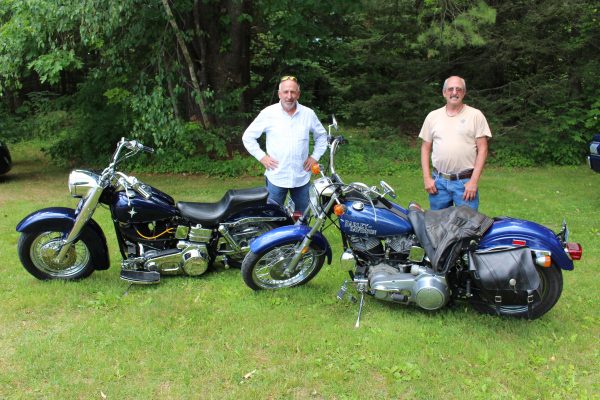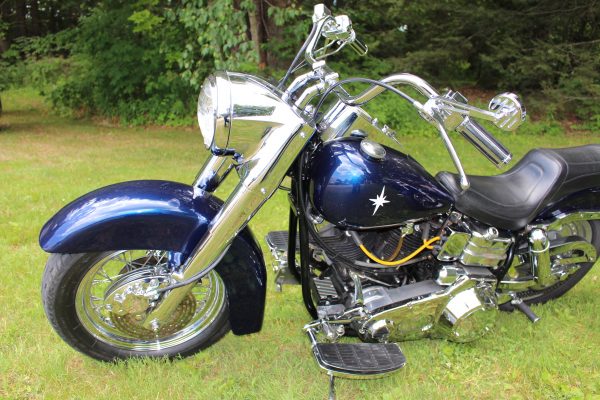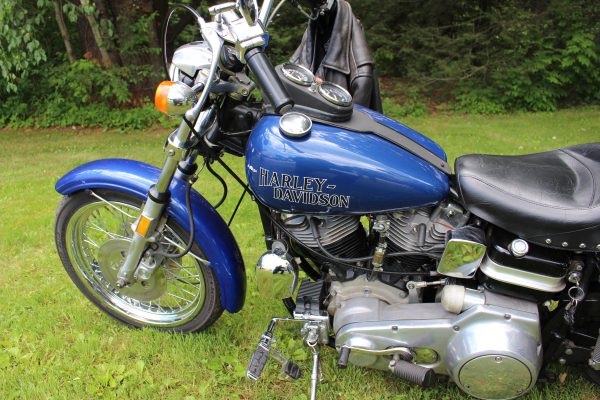It was arguably the worst period in Harley-Davidson’s history. Decades later, the “AMF years” between 1969 and 1981 are remembered not-so-fondly by many of the brand’s loyalists as a time when build quality and reliability deteriorated. Buy it new, fix it immediately was  the routine for Harley-Davidson customers, especially in the mid-1970s.
the routine for Harley-Davidson customers, especially in the mid-1970s.
Just as Detroit automakers were turning out junkers during that time, and getting overwhelmed by vastly superior products from Japan, so was Harley-Davidson. I didn’t ride back then but was into cars. I traded a mushy, low-mileage 1978 Chevrolet Camaro with uneven body parts that I had purchased new only a year earlier for a sturdier 1979 Honda Accord hatchback with outstanding fit and finish that handled and performed much better.
The initials AMF stood for American Machine and Foundry. While AMF’s arrival did save Harley-Davidson from likely bankruptcy, its expertise in manufacturing bowling equipment, Roadmaster bicycles, Head snow skis and tennis racquets, and Ben Hogan golf clubs didn’t translate into motorcycles. Unstable management, production streamlining and labor problems – layoffs and strikes – resulted in lower-quality bikes that nearly destroyed Harley-Davidson.
These days, it’s common to see old ‘70s-era Japanese bikes from Honda, Suzuki and Yamaha out on the road. AMF Harleys are far less prevalent. Consequently, when I came upon two old AMF models together in the same place last month, I had to meet the owners, grab some pics and gather phone numbers.
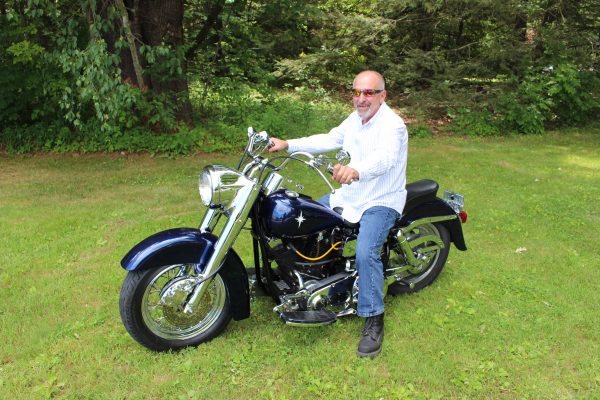
Dave Perugini of Naugatuck was riding a 1977 FX Super Glide that had been modified into an FLH (different fenders and gas tank), while Brian Rose of Goshen was on a 1979 FXE Super Glide. Both are blue in color, both are powered by a “Shovelhead” motor and both are appreciated by their owners.
Perugini got his used in 1979. A friend had passed away and he bought it from the guy’s mother. Over the years, he’s owned four Shovelheads. “Every one I bought I paid no more than $2,500. One of them I brought home in a wheel barrow,” he said.
His first bike at age 16 may have been a Honda CL350, but it’s the Shovelhead that he’s revered for decades. “I just like the sound. They have a different sound than the Evolution motor,” Perugini said.
The Shovelhead motor was a V-twin used by Harley-Davidson from 1966 to 1985. Between 1966 and 1978, it had a displacement of 1,208cc/74 cubic inches. In 1978, a 1,340cc/82 cubic inch Shovelhead version was introduced, with the smaller engine continuing to be available as well through 1981.The successor Evolution motor (or “Evo”) was introduced in 1984 and had 1,340cc, too. It lasted until 2000.
Perugini is well aware of Harley-Davidon’s reputation during the AMF years, but said, “I’ve never had any problems with the AMFs that I’ve had. They’re pretty reliable. Not as much as the Evo.”
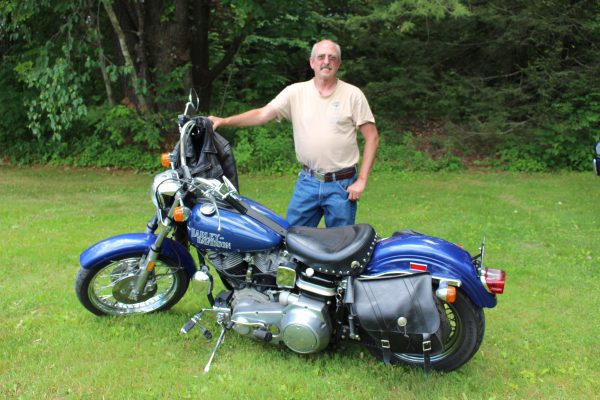
Rose tells the same story of the bike he bought new in February 1979. “It has treated me fine. It’s been pretty much trouble-free; really haven’t had a problem with it,” he said, although frozen lifters had to be sorted out early-on. A top-end rebuild was also necessary five years ago.
Rose has taken his FXE (the “E” refers to electric start, an improvement on the kickstarter on Perugini’s bike) to Laconia Motorcycle Week in New Hampshire a dozen times over the years and has put 32,359 miles on it.
“It’s comfortable. You fit right on it. It handles great. I wouldn’t take it on the highway now. It’s not a good highway bike,” he said. And he has no interest in parting with it. “I’ll probably end up riding it ’til I’m gone. I’m not going to worry about it too much after that.”
Perugini said he once considered getting rid of his Shovelhead – back in 2000. “I was getting ready to sell it,” he said, recalling that he then decided to do a full restoration “right down to the frame. As we were working on it, naturally you fall in love with it.”
That resulted in a vow that if he rode it more than once a month upon completion, he’d keep it. He did. The bike was painted in Dodge Challenger “jazz blue” with a star on the gas tank. “It’s got a metallic in it so it kinda sparkles. The North Star is what it’s replicating. I’m a Catholic and I wanted something similar to the cross,” he said.
Perugini has only ridden it twice this season. “I turned out to be a fair weather rider. I used to ride in all sorts of weather,” he said. “Now if it’s too windy or too hot…”
He may keep it as long as he’s kicking, too, because of his wife, Beth. “I probably would have sold it four years ago, but my wife really likes it. She won’t let me sell it,” he said.
After meeting Perugini and Rose, and after this column appeared in the “Republican-American” news, I received an email from Richard Morrison of New Hartford, CT. He owns a 1976 FXE Super Glide, another AMF throwback that he bought new.
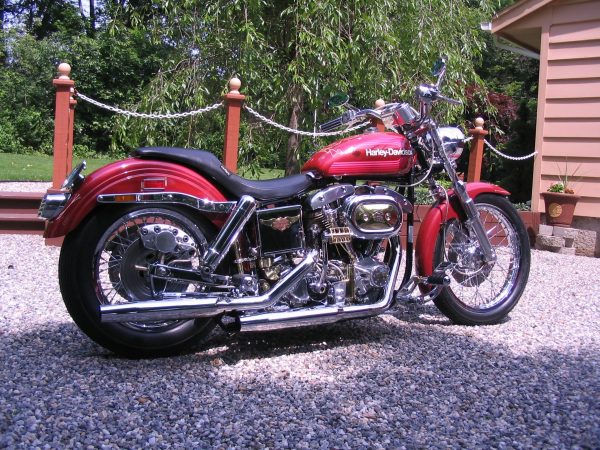
“I have owned the bike ever since and still enjoy riding it, although not as often as I used to. The engine has never been apart and the bike in general has never needed any major repairs. I have dressed it up and hand built a number of components, such as the custom forward controls, but in general it remains fairly stock including the tank which was changed on 99% of the early Super Glides because it didn’t fit the Harley image,” he wrote.
AMF’s control of Harley-Davidson ended in 1981 when senior Harley-Davidson executives bought the company, ending years of inferior machines. Had AMF not stepped up, though, the brand that continues to this day – having been founded in 1903 – might not exist.
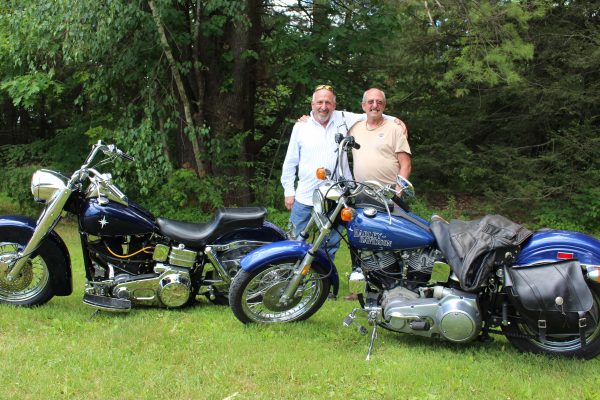
(A shorter version of this column was originally published in the “Republican-American” on July 30, 2016.)
 Ride CT & Ride New England Serving New England, NYC and The Hudson Valley!
Ride CT & Ride New England Serving New England, NYC and The Hudson Valley!

